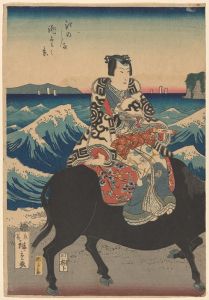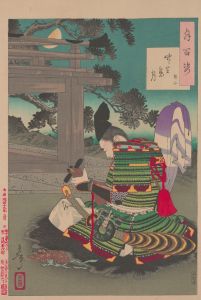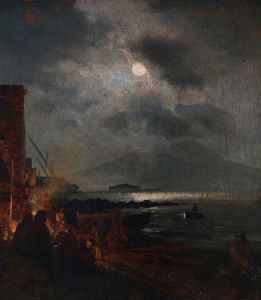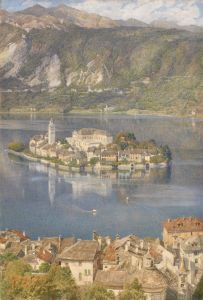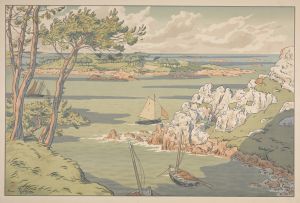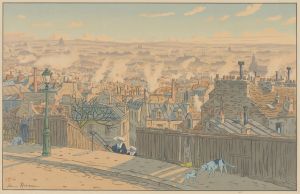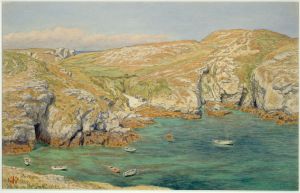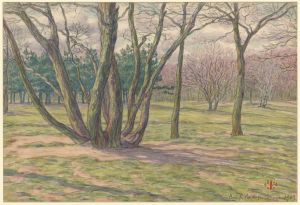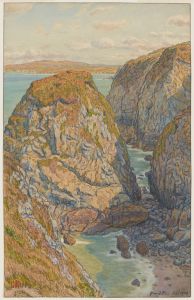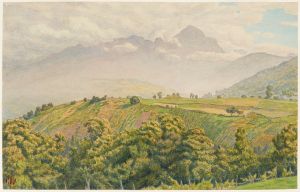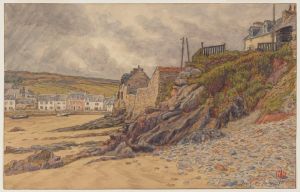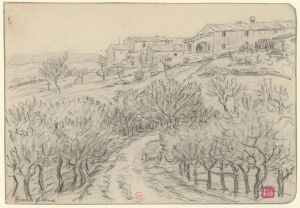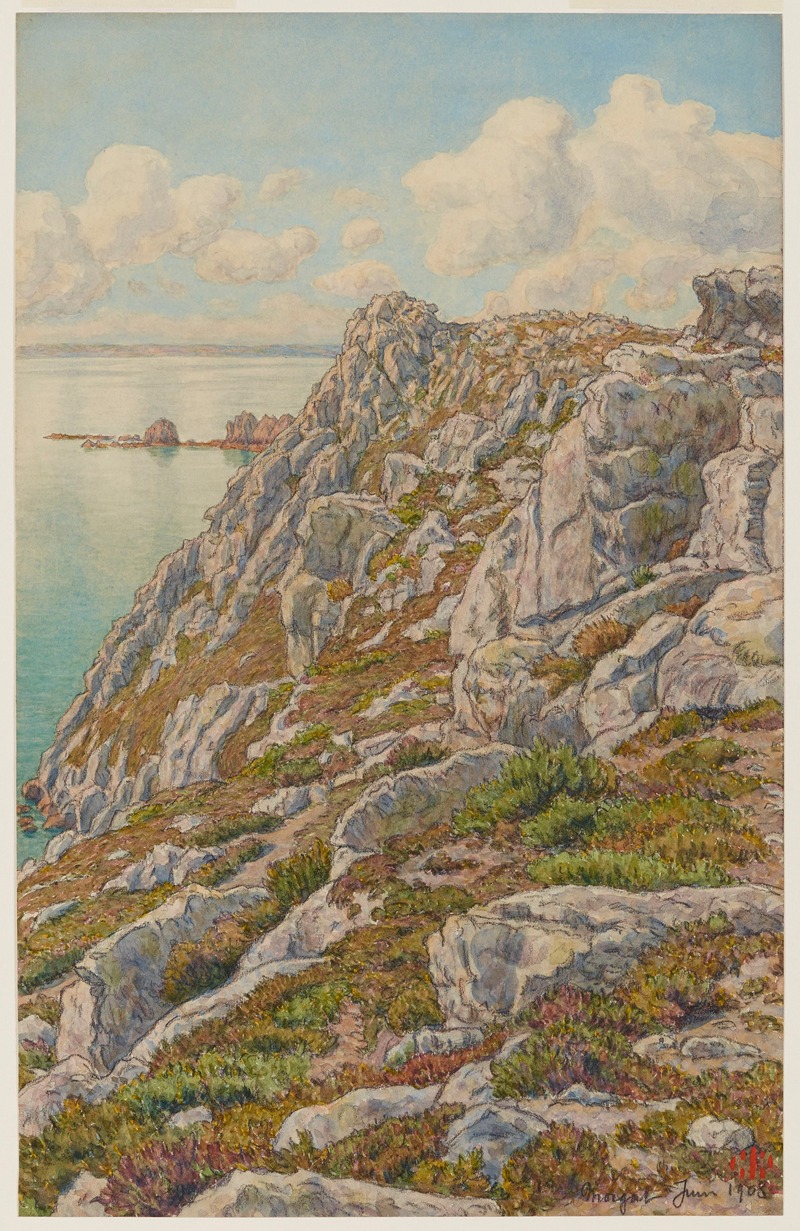
Falaises de l’Ile Vierge. Baie de Douarnenez. Morgat
A hand-painted replica of Henri Rivière’s masterpiece Falaises de l’Ile Vierge. Baie de Douarnenez. Morgat, meticulously crafted by professional artists to capture the true essence of the original. Each piece is created with museum-quality canvas and rare mineral pigments, carefully painted by experienced artists with delicate brushstrokes and rich, layered colors to perfectly recreate the texture of the original artwork. Unlike machine-printed reproductions, this hand-painted version brings the painting to life, infused with the artist’s emotions and skill in every stroke. Whether for personal collection or home decoration, it instantly elevates the artistic atmosphere of any space.
Henri Rivière's "Falaises de l’Ile Vierge. Baie de Douarnenez. Morgat" is a work by the French artist and printmaker Henri Rivière (1864–1951). Rivière is best known for his innovative use of color lithography and his ability to capture the natural beauty of the French landscape, often drawing inspiration from the Japanese ukiyo-e tradition. This particular artwork is part of his celebrated series "Les Trente-six Vues de la Tour Eiffel" ("The Thirty-Six Views of the Eiffel Tower"), which was created between 1888 and 1902. The series was directly inspired by Katsushika Hokusai's famous "Thirty-Six Views of Mount Fuji," and it reflects Rivière's admiration for Japanese art.
"Falaises de l’Ile Vierge. Baie de Douarnenez. Morgat" depicts the dramatic cliffs of Île Vierge (Virgin Island) located in the Bay of Douarnenez, near the town of Morgat in Brittany, France. The region is known for its rugged coastline, striking rock formations, and picturesque seascapes, which have long been a source of inspiration for artists. Rivière's work captures the interplay of light and shadow on the cliffs, as well as the serene beauty of the surrounding waters. The composition emphasizes the natural grandeur of the scene, with a harmonious balance of colors and forms.
Rivière's approach to this artwork reflects his broader artistic philosophy, which sought to blend traditional European techniques with the aesthetic principles of Japanese art. His use of flat planes of color, simplified forms, and a focus on natural landscapes are hallmarks of this synthesis. The result is a work that is both distinctly modern and deeply rooted in the traditions of landscape art.
This lithograph is one of many in Rivière's oeuvre that celebrates the landscapes of Brittany, a region he frequently visited and admired. His works from this period often highlight the unique character of the Breton coast, with its dramatic cliffs, quaint fishing villages, and ever-changing skies. Rivière's ability to convey the atmosphere and essence of these places has made his works enduringly popular.
Today, Henri Rivière's contributions to art are recognized for their technical innovation and aesthetic beauty. His works, including "Falaises de l’Ile Vierge. Baie de Douarnenez. Morgat," are held in various public and private collections, where they continue to be appreciated for their artistic and historical significance.





